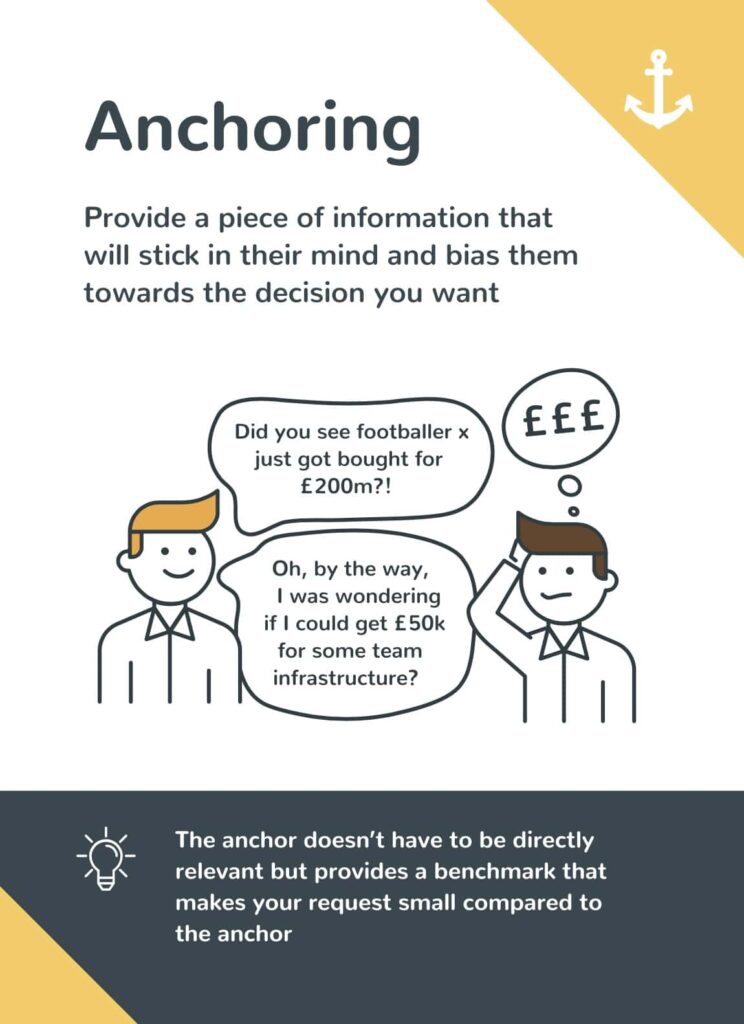Ten Tips For Coaching An Agile Team
Posted By - Geoff Watts

Ten Tips For Coaching An Agile Team
Leadership these days involves flexing between a number of different leadership styles and stances when coaching an agile team depending on the results that you’re looking to achieve and the environment that you find yourself in.
If you’re looking to create a more self-organising, resilient and proactive culture then a coaching approach could be a helpful useful tool for you. However, if you’re looking for some quick results where there is a right answer you know the right answer and you just want immediate compliance then coaching might not be the most appropriate tool in your toolbox.
What is Coaching?
Coaching is about helping other people find their solution based on getting a better understanding of their situation. It’s not about trying to work out how to wheedle your solution into other people’s minds so they say what you want them to say.
When I’m coaching an agile team, my role is to try and help the team get a greater insight and awareness as to what’s going on both in the situation and for themselves so that they can make much more informed decision about what they want to do to achieve their goals.
From a leader’s perspective that can be quite a challenge and most people have got to their leadership position because of their expertise and their ability to solve problems. They have historically been great at analysing and finding the right solution.
When coaching an agile team however, a leader will put their need to solve the problem to one side and focus on what the team think they need to solve and help them solve their problem.
Coaching an agile team is not Mentoring
Coaching an agile team is largely about developing self-sufficiency within the people you’re coaching rather than being the bottleneck as a leader. We don’t want to create a situation where every time there’s a problem the team come to you for a solution.
Mentoring is a useful practice of passing on expertise or experience so that others can learn from your successes and mistakes. You could say that mentoring is about having the right answer whereas coaching is about finding the right question because the right question will unlock the right thought process for the person or team that you’re coaching and allow them to find their own path rather than just follow yours.
Coaching an agile team is not Management
Coaching isn’t management either because a coach doesn’t hold the agenda. The coach doesn’t hold the power in the relationship; the person or team receiving coaching is in charge of what they want to focus on and how they want to go about solving it. Coaching an agile team isn’t about people learning from your mistakes; if anything it’s about helping them make their own mistakes in a safe environment and learning from them.
When is Coaching Appropriate for a Leader?
If you’re looking to get engagement and buy-in then helping people find their own solutions is going to help with that. If you’re looking to create self-sufficiency and proactivity then again coaching is going to help with that because you’re helping people find their own solutions. If you are looking to focus your time somewhere else and need to get away from being that bottleneck or the dependency within a team then again a coaching approach will help you achieve that.
So if any of those scenarios resonate with you, here is my
Top Ten Tips For Coaching An Agile Team
1. Agree What Coaching Is
Now this might seem strange because I’ve just given you a definition of what coaching is but not everyone has the same interpretation or expectations of coaching, especially when it comes to coaching an agile team. Indeed not every coach has the same coaching style so the first thing is to get some common agreement about the expectations of what coaching is expected to provide and how we’re going to go about doing that. Agreeing our expectations of one another within this coaching relationship is important because if one person is expecting one thing and somebody else is expecting another then it’s not going to be particularly effective.
This can be as simple as both parties writing out what they believe their definition of coaching is and their expectations then comparing and contrasting and then coming to a common agreement about what we both expect. This is often called a coaching contract. It doesn’t have to be the right definition…the most important thing is that we have our definition and we’ve agreed on it. It might change over time but it’s good enough for now
2. Create Some Safety
I’m talking about psychological safety here. Create the conditions for the person or the people that you are coaching to feel comfortable with you and with the process. Create an environment where people feel able to be open, to be vulnerable, to share their concerns, their hopes, their aspirations and their anxieties because the more open people can be in coaching the more benefit they get from it.
They have to be sure that what they’re saying to you in this coaching relationship is not going to come back to haunt them and that you have no ulterior motive. Ensure them that this is not going to be used in their performance appraisal if necessary and that you won’t share what is said with anybody else. Whatever it is that they need to feel comfortable, do whatever you can to give it.
3. Get Permission
Again, this might sound strange because we’ve already got an agreement as to what coaching is with our coaching contract but we still need explicit permission to be that person or that team’s coach. Coaching really should be pulled as a service and Esther Derby introduced me to a phrase that I really like which is “don’t go around inflicting your help on people”.
4. Meet Them Where They Are
What this means is don’t make any assumptions about what their concerns or anxieties are, what their hopes and goals are or their objectives for what coaching is for them. Coaching should be about what they think they should be doing and why. Find out explicitly and really listen to what’s being said. Once you understand where they are coming from – what their current situation is – only then can you really start working with them to help them find some forward momentum towards whatever their goal is
For more detail on this, check out my talk on Player Led Coaching.
5. Ask to Help Them Understand
This can be quite tricky as human beings are naturally curious. We want to know stuff, we want to find stuff out. Part of that is so that we can draw connections, identify patterns and then solve problems but part of it is also because…well…we’re just nosy.
As I mentioned earlier, the best leaders don’t necessarily worry about having the right answer. Their primary concern instead is having the right question because the right question will enable the right thought process for the person or the team that you’re coaching and ultimately that will be what helps them gain forward momentum.

6. Listen Actively
Once we’ve asked to help them understand our job then is to listen actively. That means more than just hearing the words but rather listening for the intention behind the words, listening for inconsistencies and emotions and patterns. A big part of active listening is checking that we’ve heard them correctly and that we’re not passing it through our own filters. It’s all too easy to hear what we expect or want to hear so something as simple as “ Can I just check I’ve heard that correctly? What I heard you say was this…”
Not only will this ensure we stay on the same page and not diverging in our understanding of things but it also increases a bit of empathy. People like to be listened to, they like to be heard and playing things back proves that you’re staying with them and staying with the conversation.
7. Have Belief
One of my favourite quotes is from Goethe and he said:
“When we treat a man as he is we make him worse than he is but when we treat a man as if he already were what he could be we make him what he should be.”
One of the principles of effective coaching for me is the idea of unconditional positive regard. This means we believe that the people we’re coaching have the potential to become what they want or need to be.
Whether or not that’s true is secondary to whether or not it’s helpful which might sound like a strange thing to say but if you believe it’s true and you act as if you believe it’s true then you’re more likely to make it true. Not least because you’re going to pass on that feeling that it’s possible or even inevitable to the person you’re coaching but also if you don’t believe in them that will also transmit to them. They will then lose faith in your integrity, in the coaching relationship, and most importantly they will lose faith in themselves.
8. Increase the Benefit
Hopefully once we’ve worked out what their goal is we can deduce why it would be beneficial for them. Really drilling down into what achieving this goal can do for them in terms of their objectives and their career goals as well as how it ties into their values and their principles can dial up their motivation for action and the effectiveness of the coaching process.
Sometimes helping them imagine a future where what they’re aiming for has already happened can help make it more real and increase their motivation to actually give it a go. Often by talking through the benefits with a coach they can also identify benefits that they weren’t even aware of or just haven’t really given a lot of thought to.
9. Reduce the Cost
As well as there being some benefits to the change you are coaching them on, there will also be some costs associated with making it happen. These could be financial costs, time costs, emotional costs, mental costs, physical costs, opportunity costs or even just fears or worries about what might happen.
If you can help them reduce some of those costs or fears, perhaps help them create an action plan for mitigating some of them, it can make something daunting seem a lot easier and increase the chances of action.
I explore both tips 9 and 10 in more depth in this video Using Noodles to Coach for Change.
10. Let Go Of The Solution
My biggest tip for increasing your coaching ability as a leader is to let go of the solution. I know I’m running the risk of repeating myself here but it’s so important that it’s worth saying again. This is one of the problems that we’re mostly unaware of as a leader. Many leaders have a history of expecting to solve problems, indeed of being expected to solve problems. We’ve had years of having problems escalated to us to do something about.
Being the problem solver has helped us to get where we are but it won’t help our people get to where they need to be so letting go of your idea of the solution is the number one thing that you can do to increase your effectiveness as a coaching leader.
One thing you can do to help you with this is just to remind yourself that even if you do know the answer, your solution is never going to be as successful a solution as a solution that they come up with themselves. The main reason for that is ownership. People will always be much more invested in their idea being a success than my idea being a success.
Avoid Anchoring

Even if you’re not intending for them to take your solution, it’s much harder for them to get the thought of your suggestion out of their heads once it’s in there. I know it’s tempting though. If they’re struggling to come up with a solution or an idea it can feel cruel not to offer yours. It’s natural to want to rescue them with your idea but if you find yourself in a situation where the person or team you are coaching is struggling to come up with their own idea, try coming back to something they’ve done in the past.
Ask them about when they have been successful in the past and what they did that worked. Even if it’s not directly related to the situation at hand, looking back at their past strengths and past successes can be empowering.
Another approach that could be used is to help them think about how to make the situation worse. We call this the Psychopath Approach and interestingly people often find it easier to be destructive than constructive. So maybe ask them to think of all the ways of making it worse and this might open up some interesting opportunities for them.






